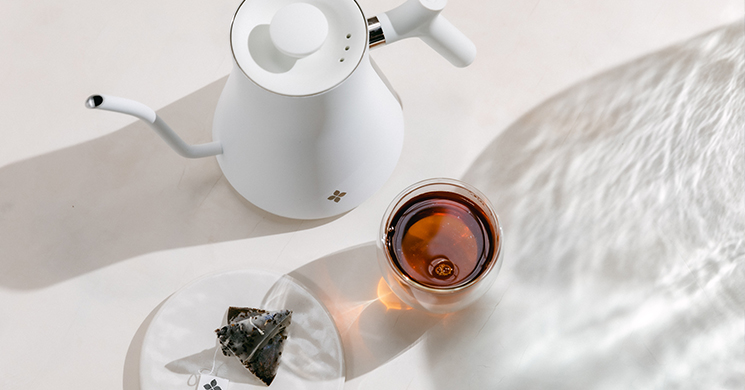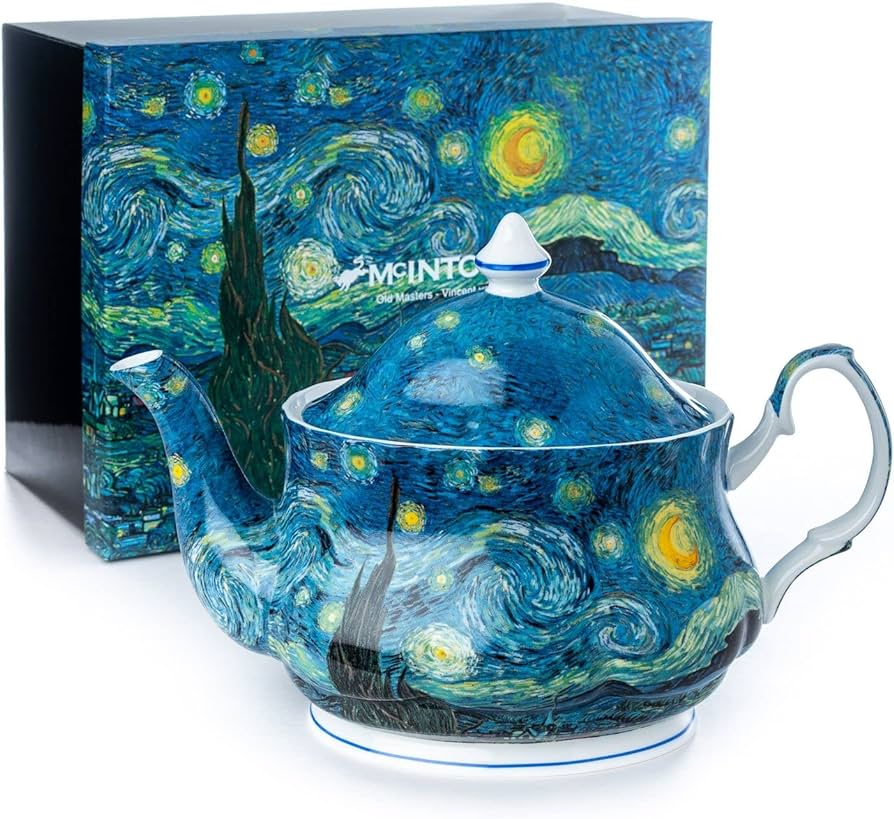Fill a kettle with water, then bring it to a boil to make tea in one. To a teapot, add the tea leaves or tea bags then pour the boiling water across them.
After a few minutes of steepening the tea, pour it into cups. (how to make tea in a kettle) People all across the world view tea as a timeless beverage, therefore preparing the perfect cup starts with the fundamental procedures. Using a kettle is the simplest and most traditional way to prepare any type of tea, black, green, or herbal.
This book will help you create a great cup of tea with a kettle from heating the water to steeping the tea leaves. So let’s investigate the craft of kettle-made tea and enjoy the relaxing and consoling effects it offers.
The Perfect Kettle For Making Tea
Search for the ideal kettle to use for tea making. Making tea is easy when using a premium kettle with exact temperature control. The proper kettle will help you to quickly produce the perfect hot water for your preferred tea leaves, (how to make tea in a kettle) so guaranteeing a good and aromatic cup every time.
Finding The Right Kettle For Tea Brewing
If you adore tea, you must choose the right kettle to create your favorite cup of tea. Consider the material, capacity, and ease of use of the kettle you want. Stainless steel kettles are well-known for their ability to retain heat and durability. For perfect tea-making, look for kettles with ergonomic handles and easy-pour spouts.
Importance Of Temperature Control In A Kettle
Extraction of the best tastes from your tea leaves depends on temperature management. For many kinds of tea, a kettle with exact temperature settings lets you heat the water to the perfect degree. (how to make tea in a kettle) Search for a kettle having movable temperature settings to make sure you may make black, oolong, white, or green tea at the ideal temperature.

Credit: www.firstrepublic.com
Choosing The Best Tea Leaves
The flavor and aroma of kettle-brewed tea are heavily influenced by the tea leaves used. Making a truly good cup of tea necessitates understanding of the various types of tea leaves and their flavor profiles. Let’s explore the universe of tea leaves and discover how to select the best ones for kettle-brewed tea.
Exploring Different Types Of Tea Leaves
Black, green, white, oolong, and herbal teas are among the several categories into which tea leaves fall. Every variety presents a different mix of flavors and qualities that let you customize your tea-drinking experience to fit your tastes (how to make tea in a kettle). The several varieties are briefly summarized here:
| Type of Tea | Description |
|---|---|
| Black Tea | Known for its rich, robust flavor and deep coloring, black tea undergoes a complete oxidation process. |
| Green Tea | Unoxidized and revered for its fresh, grassy flavor, green tea offers a delicate and refreshing taste. |
| White Tea | Minimally processed and prized for its subtle, sweet undertones, white tea exudes a light and delicate aroma. |
| Oolong Tea | Falling between black and green tea in terms of oxidation, oolong tea boasts a complex flavor profile with floral and fruity notes. |
| Herbal Tea | Extracted from various plant sources, herbal teas offer a wide range of flavors, from soothing floral notes to invigorating spice blends. |
Understanding The Flavor Profiles Of Various Tea Types
When considering the flavor profiles of different tea types, it’s essential to grasp the nuances that set them apart. Here’s an overview of the distinctive flavor characteristics of each type of tea:
- Black Tea: Bold, malty, and often accompanied by notes of caramel, chocolate, or even fruity undertones.
- Green Tea: Fresh, vegetal, and sometimes featuring subtle hints of seaweed, grass, or floral notes.
- White Tea: Delicate, with mild, sweet, and sometimes floral or fruity notes, coupled with a subtle creaminess.
- Oolong Tea: Ranging from floral and creamy to toasty and slightly sweet, oolong tea offers a complex spectrum of flavors.
- Herbal Tea: Diverse and versatile, herbal teas encompass a broad range of flavors, from zesty and spiced to calming and floral.
Brewing Techniques For Flawless Tea (how to make tea in a kettle)
Making the perfect cup of tea requires both talent and meticulous attention to detail. Every move, from understanding the water-to-tea ratio to perfecting the steeping procedure, contributes to a great brew. Let’s look at the core brewing methods that will improve your tea drinking experience.
Understanding The Proper Water-to-tea Ratio
To ensure a perfectly balanced flavor, the water-to-tea ratio is crucial. Here’s a simple guide to help you achieve the ideal ratio for your favorite tea: (how to make tea in a kettle)
- For black and herbal teas, use one teaspoon of tea leaves per 8 ounces of water.
- For green and white teas, use one teaspoon of tea leaves per 6 ounces of water.
- For oolong teas, use one teaspoon of tea leaves per 7 ounces of water.
Mastering The Art Of Steeping For Different Tea Types
Steeping time and temperature greatly impact the flavor and aroma of your tea. Take note of the following steeping guidelines to ensure each tea type is brewed to perfection:
| Tea Type | Steeping Time | Water Temperature |
|---|---|---|
| Black Tea | 3-5 minutes | Boiling (212°F) |
| Green Tea | 1-3 minutes | 160-180°F |
| White Tea | 4-5 minutes | 160-180°F |
| Oolong Tea | 4-7 minutes | 190-200°F |
| Herbal Tea | 5-7 minutes | Boiling (212°F) |
By adhering to the appropriate steeping time and water temperature for each tea type, (how to make tea in a kettle) you can extract the optimal flavors and aromas from your favorite teas.
The Art Of Pouring And Serving
Making tea in a kettle goes beyond merely steeping the leaves in hot water. The whole tea-drinking experience depends much on the manner you pour and present the tea. Pouring and serving art is learning the pouring technique and gracefully and elegantly presenting the tea. (how to make tea in a kettle)
The Significance Of Pouring Technique
A flawless and delicious tea-drinking experience is dependent on perfecting the pouring method. The taste and aroma of the tea may vary depending on how you pour it. Pour your tea from the kettle into the cup steadily to avoid splashing or spilling. Furthermore, the height from which you pour the tea influences its taste by allowing it to aerate, increasing its flavor.
Tips On Presentation And Serving Etiquette
When it comes to presenting and serving tea, paying attention to the details can elevate the entire experience. (how to make tea in a kettle) Here are some tips to enhance the presentation and ensure proper serving etiquette:
- Use a serving tray or platter to present the tea cups and kettle, adding an elegant touch to the serving process.
- Always serve tea with accompanying accompaniments such as biscuits, pastries, or lemon slices to complement the flavors of the tea.
- Hold the teapot or kettle with poise and grace when pouring, ensuring a smooth and elegant pour.
- When serving multiple guests, start pouring the tea from the eldest to the youngest or in a clockwise direction to demonstrate respect and courtesy.
- Each cup should be served with care, ensuring that each guest receives the same amount of tea and attention to detail.
- Provide a small spoon for stirring if necessary, and gracefully place it alongside the cup for convenience.
- Lastly, always maintain a warm and welcoming demeanor when serving tea, ensuring that guests feel comfortable and appreciated.
Enhancing Your Tea Experience
Pairing Tea With Complementary Snacks
Nothing elevates the enjoyment of sipping a perfectly brewed cup of tea quite like the harmonious pairing of complementary snacks. (how to make tea in a kettle) Pairing your tea with the right snacks can enhance the flavors, creating a sensory experience that is truly unmatched. Consider the following suggestions to elevate your tea and snack pairing:
- Green tea with fruits: The light and fresh taste of green tea complements the natural sweetness of fruits such as apples, pears, and berries. The combination provides a refreshing and health-boosting indulgence.
- Black tea with pastries: The robust flavors of black tea pair exquisitely with buttery pastries or decadent desserts. Try enjoying a rich black tea alongside a flaky croissant or a luscious chocolate tart for a delightful treat.
- Herbal tea with cheese: Herbal teas, with their diverse flavor profiles, can be wonderfully complemented by a variety of cheeses. Pair a soothing chamomile tea with a mild cheese like Gouda, or indulge in a spicy chai tea alongside a sharp cheddar.
The Therapeutic Effects Of A Well-made Cup Of Tea
Aside from its excellent taste, a well-made cup of tea has various therapeutic benefits that help both mental and physical health. Making and drinking tea can be a relaxing habit that provides a break from a busy day. The comforting warmth of a cup of tea can help to calm the soul and restore it. Furthermore, tea’s inherent antioxidants and good molecules help to maintain general health, (how to make tea in a kettle) therefore transforming it from a delicious drink to a nouraging elixir.
Frequently Asked Questions For How To Make Tea In A Kettle
How Much Water Should I Use To Make Tea In A Kettle?
To make a single cup of tea, use 8 ounces of water. If you plan to make multiple cups, calculate 8 ounces per cup. This ensures the perfect tea concentration for a delightful brew.
What Type Of Tea Should I Use In A Kettle?
For best results, use loose leaf tea or tea bags designed for hot water infusions. A wide range of tea types, including black, green, and herbal, (how to make tea in a kettle) can be brewed in a kettle to suit your preferences.
How Long Should I Let The Water Boil When Making Tea In A Kettle?
Allow the water to reach a rolling boil, which usually takes around 3 to 5 minutes, before pouring it over the tea leaves or bags. Boiling water ensures proper extraction of flavors and nutrients from the tea.
Conclusion
Learning the skill of kettle tea making takes you on a sensory journey of delight. (How to Make Tea in a Kettle) Paying close attention to water temperature and steeping time can transform this simple task into a peaceful experience. Spend some time appreciating the process so that you can consistently make the best cup of tea.
You may also read
How To Clean The Inside Of A Burnt Tea Kettle
How to Make Coffee in a Kettle: Ultimate Guide for Brewing Perfection
How to Use a Tea Kettle on the Stove : Essential Tips for Perfect Brewing

